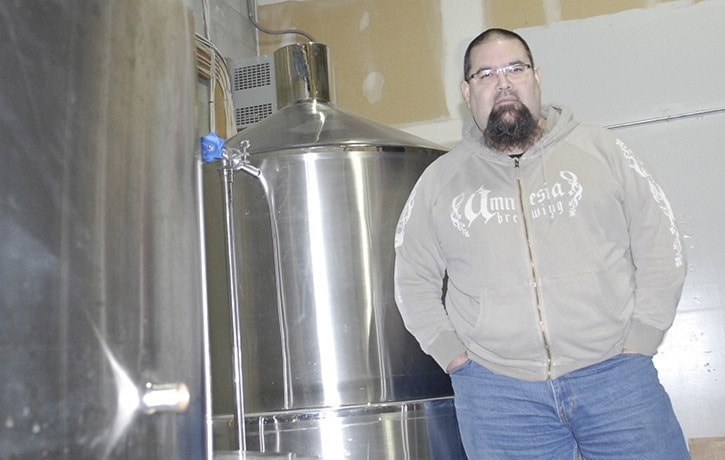The sweeping popularity of craft beer isn't just confined to downtown Vancouver.
Beer has been having a renaissance for the past number of years across North America, with more and more consumers choosing to seek out and purchase the beverage from smaller companies.
The market has been dominated for decades by the massive companies.
That, much to the joy of nascent and veteran beer geeks, is changing.
No longer is beer considered to just be a pale yellow lager. Customers can now get pale, India pale, Belgian wheat, marzen, Oktoberfest, Scotch and a host of other beers with origins around the planet at dozens of liquor retailers in the Fraser Valley and Lower Mainland.
More than 20 new breweries have started up in the region in the past two years, and this fast-paced growth shows little sign of slowing.
Abbotsford's Tim Brown would agree.
A professional brewer for the past 15 years and former head brewer at Mission Springs, Brown has recently completed his first bottled batch of beer out of his new Townline Road business, Surlie Brewing.
He opened the doors Oct. 2, and has been installing thousands of dollars of stainless steel brew kettles, fermenters and other sundry pieces of brewing operations. His first beer to market will be a Belgian-style pale ale, similar to a Chimay, and ringing in at 6.5 per cent ABV.
Many new operations start with a more recognizable beer such as a pale ale or lager, but Brown didn't want to go that route.
"Because there's a 100 of them out there already. I want to sit alone from anybody," he explained. "I think starting with an IPA or pale ale is a [bigger] challenge."
The dark brown ale, called Solitaire, exhibits a dried fruit aroma and is unfiltered, which means some yeast sediment will be present at the bottom of each bottle, a hallmark of many craft beers now available on shelves. Brown has packaged his creations in 650 ml bottles called bombers.
And the local market is showing enough positive growth signs that existing breweries are growing.
Larry Caza, who opened Old Yale Brewing in Chilliwack in 2000, said the market is fast becoming like the United States, and in particular, Portland, Ore., a craft beer mecca.
Caza noted that craft beer accounts for 45 per cent of beer sales in Portland. In Canada, the number is estimated around 12 per cent.
"People want something different," he said.
Caza owned the brewery originally, but had sold it to a separate ownership group a couple of years ago. That group have now sold to the 2Story Group, which is made up of two Abbotsford/Chilliwack-based entrepreneurs.
Caza is remaining with Old Yale, said Old Yale's operations manager Zach VanLeeuwen.
Old Yale has four beers regularly available, and is releasing limited-run seasonals throughout the year.
The brewery is installing new production equipment that will enable a doubling of its annual production from 750 hectolitres to 1,500. As well, the new owners are investing into "six-figures," said VanLeeuwen, to rebrand the beer and upgrade the packaging, cans, bottles and more.
"It's going to be different than what it is now, but different in a good way," he said.
At the Mission Springs, renovations are currently underway at the brewpub that include eight outdoor fermentation chambers, a 22-metric tonne grain silo, an automated bottling line, and more.
"It's an exciting time to be in the industry," said brewmaster Kevin Winter.
The interest in craft beer is definitely growing, he said.
"We're expanding from a brewpub with a little brewery, to a brewery with a restaurant," Winter noted with a laugh.
The principal driver of the Springs' growth is the business's recent foray into bar ownership in Korea. The Springs currently has two taphouses in south Korea.
"It's going so well we're looking at opening more."
Winter says the local craft beer scene still has room to grow.
"I don't think we're at the point of saturation. The more competition creates more demand," he said.

